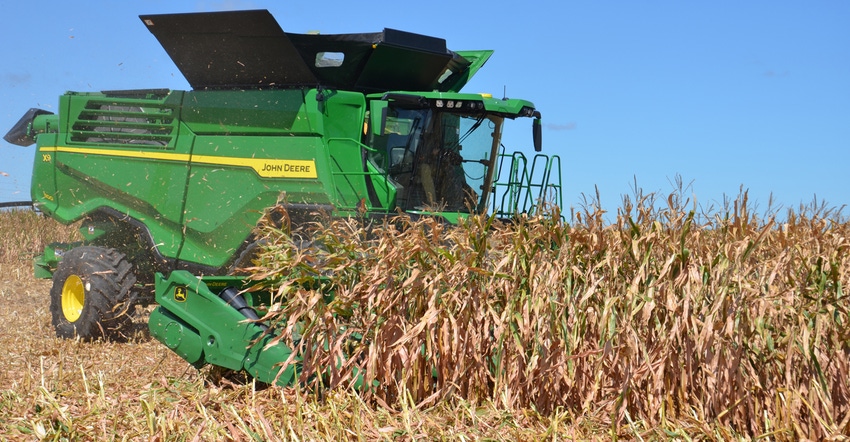
If you’re harvesting corn above 15% moisture and figuring yield by dividing total weight by 56 pounds, you will arrive at a yield that may sound good, but won’t net you as many dollars as you might expect at the elevator. It’s also not helpful if you want to compare yields from one year to another, and those yields aren’t all corrected back to what grain buyers consider dry corn at 15% moisture.
Bob Nielsen, Purdue University Extension corn specialist, notes that if you have a yield monitor, it can report dry bushels for you, but only if you have it calibrated for both yield and moisture. If it’s not calibrated, he doesn’t consider it an accurate way to record and compare yields.
On the flip side, if corn is very dry, below 15%, Nielsen says you’re not getting as many bushels as you could when you sell at the elevator. You will need to dry to 14% for long-term storage. Nielsen points out that grain buyers don’t compensate you for overly dry corn.
Calculate dry weight
Here is the process Nielsen uses to move from wet bushels to dry bushels, at 15%:
Step 1. “First recognize that the initial percent dry matter content depends on the initial grain moisture content,” Nielsen says. “For example, if the initial grain moisture content is 20%, then the initial dry matter content is 80%.” That’s simply math: 100 minus 20 equals 80.
Step 2. If the desired ending grain moisture content is 15%, which is the case at most elevators today, then the desired ending percent dry matter content is 85%, Nielsen says.
Again, it’s simply a math problem: Final dry matter content equals maximum wet content minus desired content, so 100 minus 15 equals 85.
Step 3. Multiply the weight of wet grain by the initial percent dry matter content, Nielsen says. Then divide the result by the desired ending percent dry matter content to get the weight of actual dry grain.
He illustrates this with an example: Suppose you have 100,000 pounds of 20% corn. Using the math in Step 1, you have 80,000 pounds of absolute dry matter. You want to convert it to pounds at 85% dry matter, as in Step 2.
Use the math from Step 3: 80,000 pounds of initial dry matter content divided by 85% ending dry matter equals 94,118 pounds of corn at 15% moisture.
Step 4. Make the bushel comparison: If you divide 100,000 pounds of 20% corn by 56, you would have 1,786 bushels. If that is from 10 acres, the per-acre yield would appear to be 178.6 bushels.
After correcting and taking moisture down to 15%, the true total dry bushels would be 94,118 pounds divided by 56, or 1,681 bushels. If it’s from 10 acres, that’s 168.1 bushels per acre, or 10.5 bushels per acre less than represented by wet weight.
Learn more in this related article. Also learn how to calibrate your yield monitor for yield and moisture.
About the Author(s)
You May Also Like




